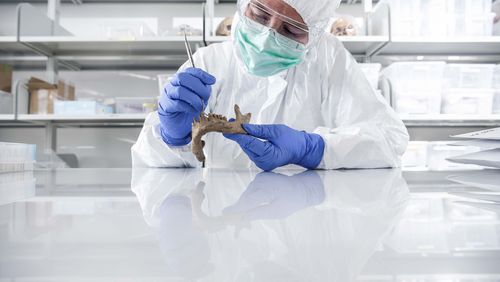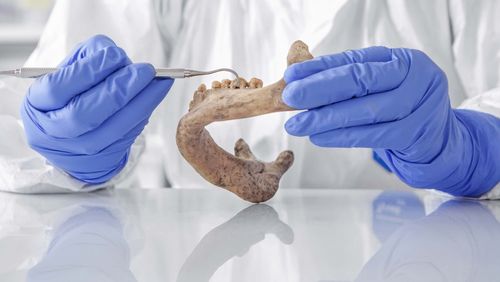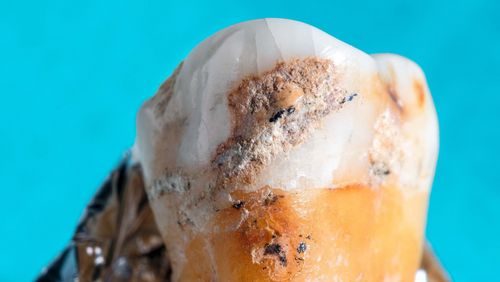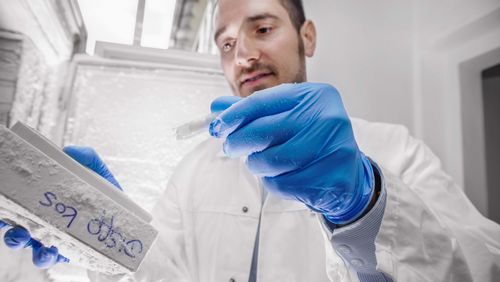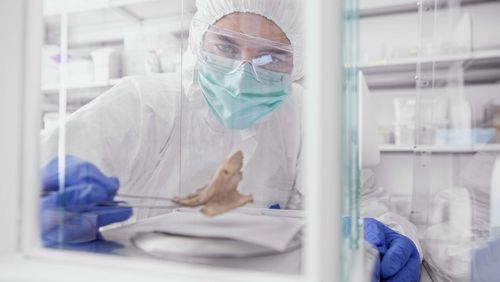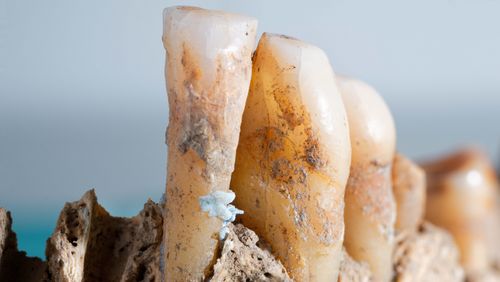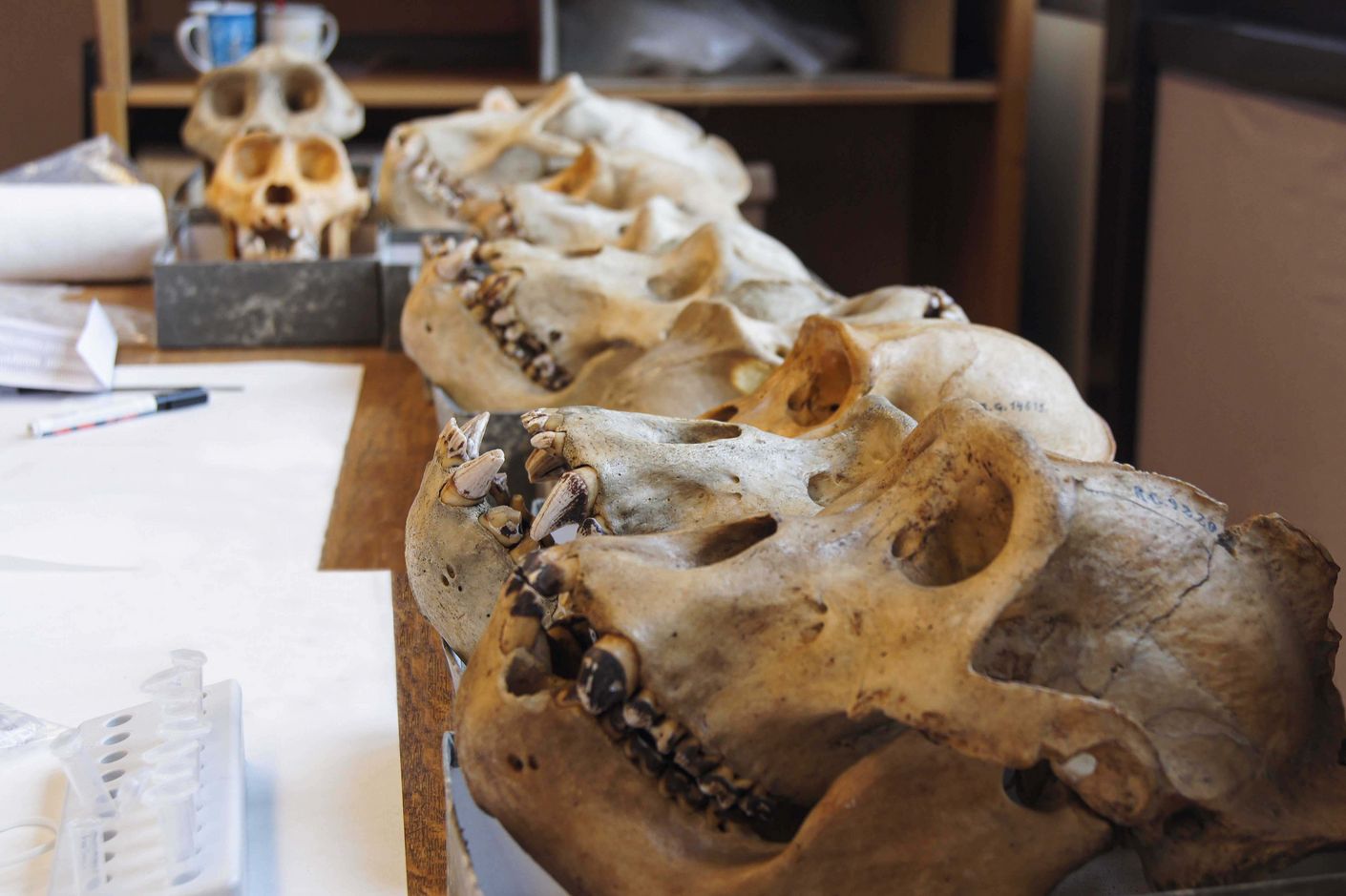
Interpreting ancient dental plaque
Creating modern-day antibiotics from prehistoric genetic material is the goal of the new research discipline palaeobiotechnology in Jena. In her search for ancient DNA, archaeologist Christina Warinner has also made some surprising discoveries about human history.
Professor Warinner, you and your research team at the Max Planck Institute for Evolutionary Anthropology are working with biotechnologist Dr Pierre Stallforth and his team in Jena on this unique palaeobiotechnology project: you’re analysing the dental plaque of early humans for genetic material that can be used to combat resistant bacteria of today. How has the project progressed?
Christina Warinner: We’re very satisfied, although the first half of the year was overshadowed by the coronavirus pandemic. This means it wasn’t possible to ship any new dental calculus samples from our find sites in Mongolia to our labs in Germany. So we changed our plans and decided to concentrate our energies on bioinformatics—and we made excellent progress.
What sort of progress?
When we find DNA sequences in prehistoric dental plaque, it’s critical to know whether we’re dealing with ancient or contemporary genetic material—which might stem from a contamination on site. Bioinformatics methods are very helpful here, because they render sequences in the genetic material visible. But first we had to develop the software programs for the analyses, which we did last year. That’s what enabled us to study the calculus samples we had already collected.
Have you already found antibiotic agents?
Our job is to pass on our analyses of the samples to Pierre Stallforth and his team. They’re specialised in seeking specifically for antibiotic substances—and they’ve already found several interesting candidates. This is the beauty of our project: we’re doing something useful for the present age while also learning more about the past.
Can you explain what you mean?
When my group analyses the archaeological specimens, we’re also studying the evolution of the oral microbiome, meaning all microbes in the mouth. Because traces of microbes remain in dental calculus for millennia, they can provide answers to unresolved questions on human history.
What insights have you gained so far?
We made some very surprising discoveries and published articles in major journals last year. For example, we compared the dental plaque of modern humans with that of both Neanderthals and primates like chimpanzees and gorillas. We found out that ten groups of bacteria have made up the largest part of the oral microbiome for some forty million years. This suggests there is a stable core microbiome. At the same time, however, half of these bacteria are poorly studied and don’t even have a name.
We modern humans and chimpanzees have similar microbes in our mouths?
We do indeed have the same ten main groups of bacteria, but they present differently. The major differences are found in a certain streptococcus subgroup. This kind of bacteria is almost entirely absent in chimps, but it’s the major group in both humans and Neanderthals, where the oral microbiome consists largely of streptococcus bacteria.
Why is that important?
This streptococcus genus is specifically adapted to breaking down starches—or carbohydrates. The fact that they’re also abundant in the mouths of Neanderthals suggests that starchy foods like roots, tubers and seeds played a role in the human diet already long before the advent of agriculture and the evolution of modern humans.
Is this a new insight?
Yes, it is, and it has very interesting implications. A big brain needs lots of energy, and starch is the most energy-rich source of food. So this might imply that our ancestors began developing bigger brains because they began eating more starch. Until now, the theory was that larger brain size came about when our ancestors started hunting, and that animal protein was the decisive source of energy.
Are there even more secrets hidden in ancient dental plaque?
Yes, I’m certain that dental calculus will reveal more about how the brain in hominids evolved. And it might help resolve other unanswered questions like when we began using fire. Starch is more digestible when it’s cooked, so it’s possible that cooking became part of human history much earlier than previously thought. Of course, there are no answers yet, but our findings are very thought-provoking. What’s particularly inspiring about our work is that we’ve made so many discoveries already in the process of working towards the project’s goal of finding antibiotic agents.
Text: Adrian Ritter
Photos: Katerina Guschanski




